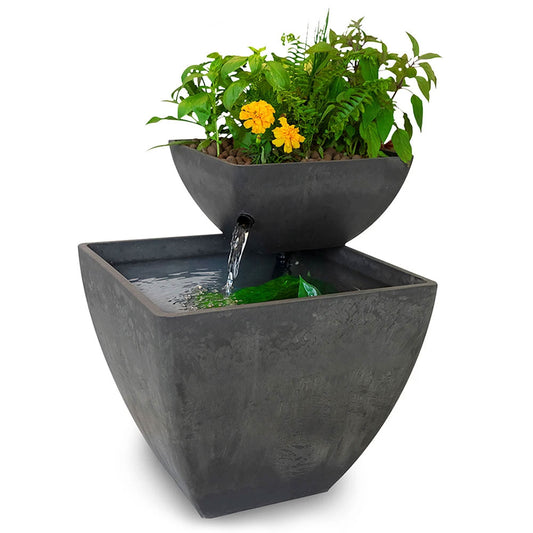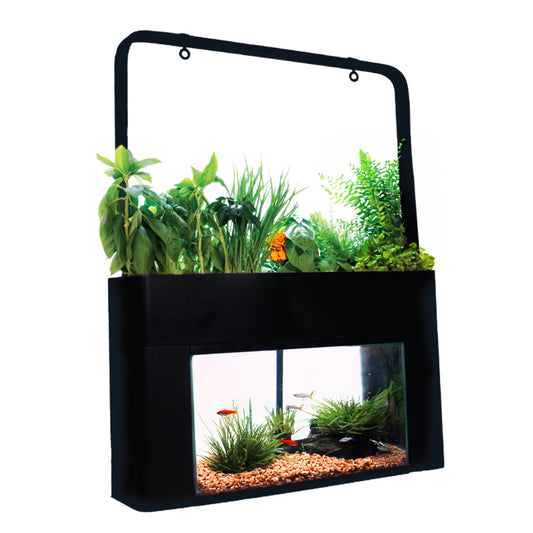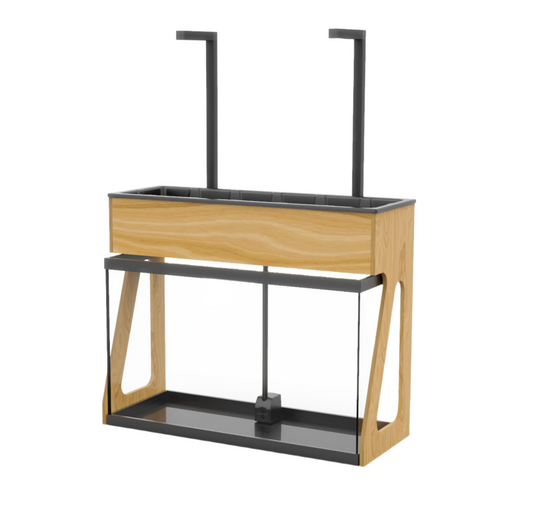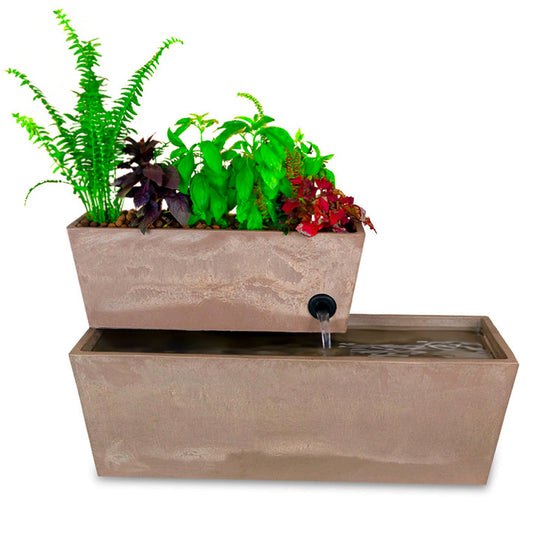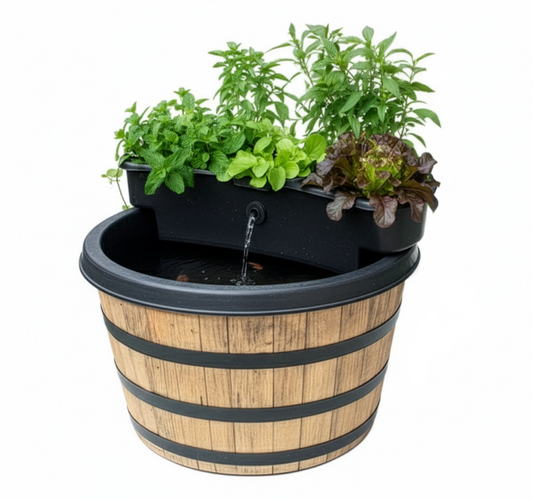System Size - How Big is Better?
In an aquarium or single-tank aquaponic system, the size of the tank isn’t just about how it looks, or how much room your fish need to move - it also represents your system’s chemical capacity. It’s a simple principle: if you add a chemical to liquid, a small amount of liquid will change much more than a large one. For a simple analogy, think of a cup of coffee. If you order a small coffee and add one shot of cream, you’ll end up with a nicely tan, creamed cup of coffee; if you order an extra-large for the road, one shot of cream might only make it a little less black!
Aquariums aren’t coffee, of course, and they definitely don’t need cream! But this visualization can help you understand why small changes in water quality in your system - that one single shot of cream - can produce big changes in a small tank. If you’re keeping a very small tank, you have to be very careful about how much you add to it - how many fish, how much food, how often you change or add water. Small mistakes can destabilize your system very quickly, and stability is very important to the health of an aquatic system.
If you’ve read a bit about how aquarium-keeping works, you know that your biofilter - the colony of beneficial bacteria that grow in your aquarium - is crucially important to the health of your system. Those bacteria can only grow so dense and only eat so fast, so the size of your biofilter determines how quickly they can process waste and keep it from becoming toxic for your fish. A smaller volume of water will also change much more in mineral content due to evaporation, potentially causing salinity and hardness to vary quite a bit, and changes in pH will be much trickier to manage as well.
There’s also the matter of stocking a small system. People tend to want a full, exciting aquarium, but the smaller the tank, the easier it is to overdo it! A school of tetras that might be happy in a 10-gallon tank could very quickly sicken or die in an undersized 2- or 5-gallon novelty aquarium.
Here are just a few reasons why we think the AquaSprouts Garden makes it easy diving into the world of aquaponic gardening:
- We designed the AquaSprouts Garden to fit a 10-gallon aquarium because for many years it has been by far the most common size of home aquarium. There are obvious reasons for its popularity: it’s affordable, it’s compact and can sit on a sturdy shelf or end table, and it’s a small enough volume of water that a broken tank would mean a big mess, but not a home-ruining disaster. At the same time, it’s large enough that you can keep a school of typical small aquarium fish in it, enough to be engaging and more than just a fishbowl.
- Everybody likes things easy, and when somebody thinks about setting up an aquarium, they’ll often make the same assumption that people tend to make about all animals: smaller is easier. Small dogs make smaller messes; a hamster is easier to care for than a pony. In some ways, they’re right - it can be no small task lugging dozens of gallons of water back and forth in buckets when it comes time to change water in your large aquarium. An aquarium isn’t just an animal, though - it’s a whole life support system. And if you’re keeping an aquaponic garden as well, it’s not just life support, it’s practically a miniature ecosystem!
Of course, you can certainly keep a small tank. If you’re willing to stock lightly and keep a very close eye on your small tank, you can have a very appealing, healthy system at almost any size. Well-kept small tanks can be stunningly beautiful, and they can bring a touch of life into a little space. Saltwater aquarists often keep “nano-reefs,” tiny reef tanks of five gallons or less. Advanced aquarists grow corals, plants, and entire populations of fish and invertebrates in very small spaces. People keep wonderful aquariums in all sorts of sizes. But remember: complex small aquariums are an expert hobby. They’re a challenge, and they require dedication and care. They aren’t a great choice for kids, or for decoration in an office or classroom or other location where they might not receive plenty of attention!
If you’re thinking about aquaponics, there are a couple extra wrinkles to this issue as well. In an aquaponic system, nutrient input needs to be balanced with nutrient use by the plants. In between, those nutrients need to be processed - first by the fish, then by your biofilter. Fish and bacteria can only eat so much! In a very small system, it can be very difficult to provide enough nutrients for healthy plant growth, since the fish’s appetites and the biofilter’s capacity may simply not be able to keep up with the needs of fast-growing herbs and vegetables, resulting in a situation in which your plants are undernourished and there’s a strong temptation to pollute your water by overfeeding your fish, trying to fertilize. In practice, this means that very small aquaponic systems - anything less than ten gallons or so - will probably require maintenance just like a small aquarium, because the small amount of plant growth they can sustain simply won’t be consistent enough to keep water quality stable. On top of that, tiny aquaponic gardens may be disappointing to would-be farmers, because they simply won’t be able to produce much of a yield!
When it comes to aquariums, it’s almost always easier to succeed with more water. A bigger tank will give you more margin for error, and more room to keep all the interesting plants and fish you want. If something is going wrong - if your filter breaks, if your kids are a bit too helpful with the food - you’ll have more time to catch the problem if it’s more diluted. You don’t need to go huge, and not everyone has the space for a 55-gallon tank, but if you’ve had aquarium/aquaponic problems in the past, consider sizing up!

